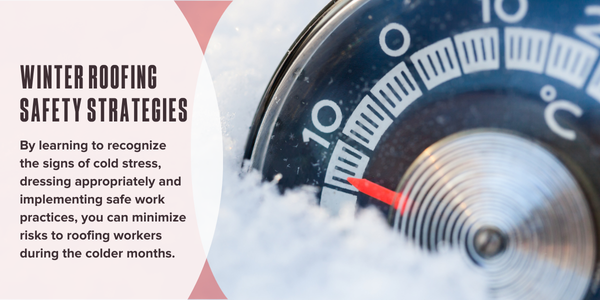5 Tips for Working Safely in the Summer Heat

Summer is peak roofing season. How are you staying safe and cool?
1) Appreciate the risks. The official start of Summer – and with it, ferocious heat – was on June 20th. Construction workers, especially roofers, are uniquely susceptible to heat-related injuries due to the nature of the trade. Excessive heat can cause severe injury and even death.
2) Plan for heat-related hazards and supervise closely. Management should implement plans and procedures for work in high heat environments and clearly delegate duties to on-site supervisors. Namely, someone on each construction site should be trained and designated to: (1) identify heat hazards, (2) recognize symptoms of heat illness, (3) administer first aid; and (4) activate emergency services when necessary.
3) Take special care to protect new workers. Approximately 50% of heat-related deaths occur on employees’ first day. New workers must acclimate to the heat before they can take on a full workload. Use the 20% Rule: new and returning workers should only work 20% of their first day, and an additional 20% each day thereafter. During their first two weeks, workers must take more frequent and longer breaks and be closely monitored for signs of heat illness.
4) Train workers regarding heat-related hazards. All employees should be trained to recognize hazards and symptoms of heat-related illness. For example, employees should understand that factors other than heat (e.g. workload, protective clothing, etc.) may contribute to their total level of heat stress. Workers should understand the symptoms and first aid procedures for heat-related incidents so those incidents do not become fatalities (for example, the importance of immediately rendering first aid and never leaving an injured worker alone).
5) Provide appropriate amounts of water, rest, and shade. Cool water should be provided in plentiful amounts and convenient locations. Supervisors should be prepared to instruct workers regarding the appropriate amount of water to drink based upon the total level of heat stress on each day. Workers should have a cool and shaded area to take breaks, ideally in a climate-controlled environment. Supervisors must designate mandatory break periods, with the frequency and length of those breaks varying by the total level of heat stress present.
Authors Note: The information contained in this article is for general educational information only. This information does not constitute legal advice, nor should it be relied upon as legal advice for your specific factual pattern or situation.
Travis S. McConnell is a construction law attorney with Cotney Construction Law, LLP. McConnell’s legal practice focuses on all aspects of construction law. He works extensively on matters relating to OSHA defense, which includes the management and development of safety and health strategies for construction contractors across the United States. McConnell’s OSHA practice concentrates on litigation and the appeals of citations involving catastrophic construction-related accidents. For more information, contact: Travis McConnell, tmcconnell@CotneyCL.com.




















-2025-xtv-mls-tour-2.png)

Comments
Leave a Reply
Have an account? Login to leave a comment!
Sign In